
- Mobile Learning Essentials - Home
- Introduction
- Mobile Learning Essentials - Myths
- Enhancing Mobile Learning
- Case Study1
- Reflection and Research
- Cost vs Benefit Ratio
- Communication Mobile Learning
- PersonaliZing M-Learning Platforms
- Expectations of Mobile Learners
- Cultural Factors
- Frameworks
- Role of Context
- Facilitating Mobile Learning
- Case Study2
- Adopting Mobile Learning
Mobile Learning Essentials - Quick Guide
Mobile Learning Essentials - Introduction
Mobile Learning, often shortened as M-learning, is the concept of gaining education on various available contexts by the usage of social media interactions and online content from using portable electronic media. The advantage with this technology is that it doubles up as a convenient form of distance education and also a time managing tool, as students have the option to avail the education at a time of the day as per their liking.
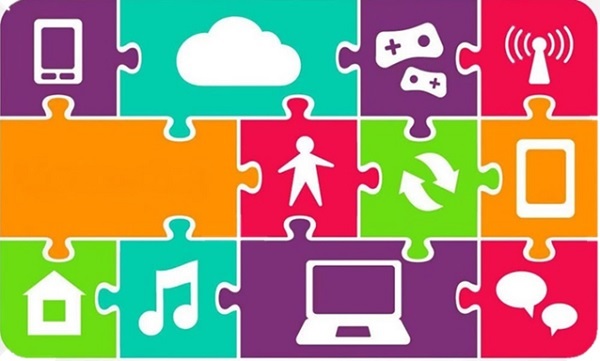
When we say M-learning technologies, it is generally a blanket term which also includes other hand-held devices like −
- MP3 Players
- Mobile Phones
- Smartphones
- Tablets and
- Phablets (a tablet which can also operate as a calling device)
The feature that M-learning focuses the most is on providing the learners a flexibility of time and place. The content must be made available for access according to the ease and convenience of the learner.
To achieve this, many mobile tools have been created to engage and assist learners in finding new learning materials and sources. M-learning is the most convenient form of online educational platform today, simply because content can be accessed from any place on demand.
Defining Mobile Learning
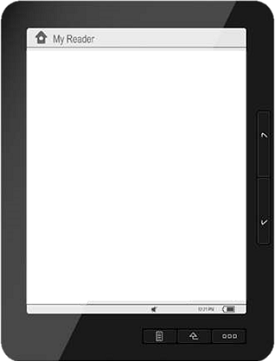
Mobile learning can be defined superficially as a learning pedagogy that involves learning using mobile devices. However, there is more to this than meets the eye. What appears as simply a change of learning method, actually involves multiple learners accessing information stored in one remote server simultaneously and sharing their feedback on it.
The devices are just accessories to learning, as classrooms, boards and chalk used to be. The important point here is providing the flexibility and context.
For example, an online training session that needs to be attended between 3 and 5 in the afternoon, without any chances of flexi-times, isnt mobile learning, even if the learner can attend the meeting online via his mobile device.
Mobile learning allows for an environment of education that is not possible due to the physical and time-bound restrictions of working in desk jobs. Despite having such tremendous potential to take over standard methods of education, M-learning has very little research to support its claims; two reasons can be attributed to this, which are given below.
Reason 1 − One of them being the very feature that gives M-learning its foundation, i.e., the device itself. By the time any research team has adequately held any observation over some period of time, some new device offering new features floods the market and disrupts the available data.
Reason 2 − The students and employees are subject to the policies of their institutions or organizations, many of which do not encourage carrying of mobile phones or usage of it within their premises over concerns regarding privacy, protecting confidential details and minimizing distraction at work.
Online Learning vs. Mobile Learning vs. Digital Learning vs. e-Learning
Online Learning, Mobile Learning, Digital Learning, and e-Learning sound so similar to one another that people feel they are interchangeable terms and people use them so. While certain portions do overlap with one another, there are some distinctions as well. Let us discuss them.
Online Learning is used to describe a learning pedagogy engaging both offline and online tools. A good example of this would be a learner reading Geography, and then referring to google maps to understand the concept of scale.
e-learning refers to the extensive usage of internet in learning where all access to information needs internet usage and data is shared and accessed online only.
Mobile Learning is designed as a learning on the go concept, where snippets of information are shared on individual topics as answers to particular questions, which makes it fundamentally different from the holistic approach towards learning that elearning adopts.
Digital Learning is basically the combination of all these types of learning. Its one term that encapsulates offline learning and online learning, so sometimes digital learning is also referred to as Blended Learning.
Why Mobile Learning?
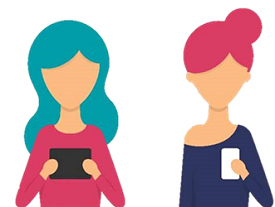
Mobile Learning allows educational institutions to expand their educational services beyond the boundaries of their classrooms right into the reading rooms of their learners.
Not only providing content quickly to multiple learners, sharing feedback and editing becomes faster too. M-learning caters to performance support systems as well, as employees can share their work details with their managers, who in turn, suggest changes and offer them alternatives.
Many institutions are typing up with such platforms that can help provide their content as per the availability of the user. This is also an attractive platform to attract students and teachers towards education.
Mobile Learning Essentials - Myths
As with any new technology, there was initially a lot of skepticism regarding M-learning. Some said that it is not a perfect platform, others said that it will encourage distractions, some even suggested that it will reduce attention span and promote intrusive behavior.
While some of these concerns might be justified, under specific circumstances, most of the others are not so well-rooted. Let us discuss some of the most common myths surrounding m-learning, and also debunk them −
Myth 1: Mobile devices dont have big enough screens
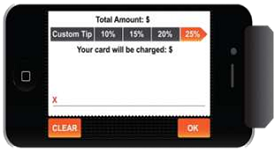
It is true that mobile platforms wont offer the kind of large screens that desktop computers or laptops offer. However, the more important question here is do we use the entire laptop screen to read a document?
E-book readers have done a marvelous job at debunking the myth that text cannot be read off a mobile screen. In other words, the screens used in mobile learning may not be large, but they are large enough for comfortable viewing and reading.
In fact, their smallness is actually a boon, because it allows the learner to access information without additional use of hardware like a mouse and a keyboard or a headphone and webcam for that matter. All it takes is the tip of the finger.
Myth 2: Mobile Learning doesnt have a consistent standard of evaluation
Sharable Content Object Reference Model (SCORM) had tried to set a standard for the e-learning products, however with the development and rapid implementation of frameworks like HTML5, CSS3, along with the initializing of many app stores like iOS, Android, BlackBerry. It has become very easy for existing content to become more mobile-friendly.
Technology is working fast towards introducing a standard procedure that can seamlessly connect different mobiles with one another for the sake of interaction and data usage.
Myth 3: Mobile devices offer plenty of distraction
When teaching using slideshows and projectors was started, then general opinion of the public was similar it will distract readers from education towards the gimmicks.
Although, that boat has sailed and no one has had any major attention-deficit disorders because of it.
If anything, education was improved, as the teachers could encapsulate the entire idea into short phrases and spend more time interacting with the student. Anyways, the turn all notifications off feature will come real handy.
Myth 4: Mobile learning is just portability-enhanced learning

Mobile learning may be offering greater mobility, but thats not the only application for it. It gives a flexibility of environment and an on-the-spot resolution to issues.
For example, a person who doesnt feel comfortable sitting in an upright posture, might find a more relaxed way of reading.
Not only that, a person maybe waiting in a queue for something and then realizes that a similar offer has come up in someplace else. He can now switch venues and get a better offer and can save time as well.
Myth 5: Mobile Learning is not suitable for children with disabilities

Hitting this myth right on its head, M-learning companies have pointed out that many online app stores like Google Play and iOS store conduct extensive accessibility tests on apps before approving their availability, just so that all their customers get the best possible experience and accessibility with their products.
Contrary to the allegations of non-accessibility, all these products actually offer many personalization features which helps the users to maximize usability of the product.
This flexibility makes mobile learning a boon for learners with disabilities.
Myth 6: Mobile learning delivers only small snippets of information

In todays world, where learners are leaning towards getting information through personal experience, as compared to reading books full of theory on the subject, it is small snippets of information that offers better resolution.
For example, while knowing about a city earlier needed the engagement of a fully-trained guide, now M-learning has made it possible for even someone who doesnt know the entire city, except for a neighborhood, to share information on it.
Earlier, the best restaurant in the area was the one that the guide marched you into. Now, you can get reviews of restaurants in just a particular area from people who might not have ever opened a history book on that place. This sharing of information in snippets actually encourages participation of the people and helps gaining knowledge from all different possible sources. However, that doesnt mean that M-learning cannot provide holistic education.
Audio and video features are frequently used in platforms like MOOCS to take an M-learner virtually inside the classroom where the teaching is going on. Learners can get the closest it comes to a real in-classroom experience with the help of virtual learning tools.
Myth 7: Mobile Learning is already being implemented by mobile-phone users

As per recent reports, most of the mobile-device users predominantly use it for the sake of social networking and interconnectivity only. They are yet to implement M-learning on their mobile platforms.
Part of these issues stem from the instructors themselves not being adaptive to M-learning technology. They arent keen on learning a new skill, especially if it is a skill that takes away the focus from the single instructor model that they are used to.
Myth 8: Mobile learning is unreliable as devices can be lost, damaged or stolen

Mobile devices that can impart a good quality Mlearning experience are generally expensive. This undoubtedly makes them a prime target for thieves. Because they are sensitive devices, they may also be prone to damage upon rough handling.
But, as per the reports submitted by the Mole NET program- out of 10,000 handheld devices that they had engaged in various projects, less than two percent were damaged, lost or stolen.
This means that these unfavorable situations can be largely thwarted if the learner is cautious.
Myth 9: Mobile devices are less secure than desktop computers
Mobile devices might be more prone to theft, because of their smaller size, but they have better data storage facilities and better security.
Most phones have a PIN-enabled access to the phone. Many of them have started incorporating finger-scanner features, which means the data cant be accessed by anyone else.
In addition to this, there are software like Prey, that can track mobile devices in case they are lost or stolen.
Myth 10: Mobile learning is expensive
While the initial expenses of purchasing a decent phone might be high, the subsequent investment of time, efforts and money on maintenance and usage of mobile phones is way lesser as compared to desktops.
Also, mobile phones now cost a fraction of what they used to come for earlier.
Some universities even have provisions for smartphones to be made available free under contractual usage agreements, where a learner pays for the services and usage of the smartphone, without paying for the smartphone itself.
Enhancing Mobile Learning
Mobile learning is a concept that depends heavily upon context. It is a flexible term used to cover a spectrum of approaches that help learners in a variety of ways. They focus on getting key pieces of information to staff and students in timely and contextually-useful ways.
Examples of these include informing learners that a lecture has been postponed or cancelled, or that library books are due back soon. They can also prepare the students to appear in a webinar.
There are five immediate improvements for mobile learning which are listed out as follows.
- Including a mobile stylesheet on the website
- Add a mobile-friendly front end to an existing RSS feed
- Setting up social media accounts to keep updated on news −
- Turning the mobile version of your learning platform on
- Opting for secure SMS/text services
Let us now discuss each of these improvements in detail.
Including a mobile stylesheet on the website
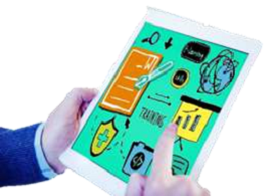
Using a mobile-friendly stylesheet, an existing website can offer its services more effectively to users who are increasingly searching for products and services online and through mobile devices.
Designing interactive mobile interfaces has now become a full-blown industry with companies dedicated to changing existing websites to be mobiledevice copacetic. In addition to that, social learning, or collaborative learning can be kick started on a mass scale through M-learning, as sharing of information is also instantaneous.
Add a mobile-friendly front end to an existing RSS feed

RSS feeds are key features to be used by most content management systems (CMS), to keep the readers updated on new information. Nowadays, RSS feeds can be used to syndicate information to more than one device other than a desktop.
This keeps the learners always informed on the latest changes and buzz in their areas of interest and provides them updates on daily, sometimes, hourly basis by collating information from all sources and presenting them in inbox or daily feeds.
Setting up social media accounts to keep updated on news
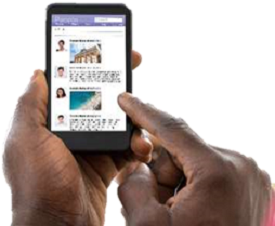
Facebook, Twitter and Google+ have already implemented some very mobile-friendly websites and apps. Sending an RSS feed to social networking sites where all your friends already are, provides them quick information and faster response time, as normally all the friends spend time on those platforms itself.
This not only gives a quick response to the information that you post, but also generates instant feedback process.
This acts as a time-efficient method to get any information proof checked for facts.
Turning the mobile version of your learning platform on
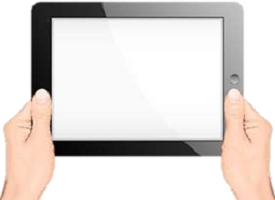
Most of the virtual online learning platforms of today have developed a mobile-phone version for their learners. Some of such e-learning platforms such as Moodle, Blackboard and Microsoft SharePoint have extremely mobile-friendly apps or versions of their online solutions.
Such tools help in getting fast responses, corrections and feedbacks. In many countries, introducing Meducation has brought about a very significant change in the scoring levels of students, and a marked decrease in the drop-out rates from technical academic education.
Opting for secure SMS/text services
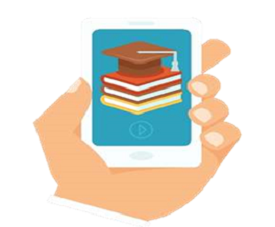
For additional security of data while sending texts, or receiving messages from others during M-learning, many services have started coming up with flexible options to integrate security features with the learners existing SMS provisions.
These services provide a secure environment to share information without fear of data leakage and privacy violations. Mass texting through SMS has been a standard way of advertising information.
Nowadays, live links can now be embedded in these SMSes which will elaborate on the information given in the text messages.
Mobile Learning Essentials - Case Study1
In this chapter, we will discuss regarding a case study done by using Digital Learning is basically the combination of all these types of learning. Its one term that encapsulates offline learning and online learning, so sometimes digital learning is also referred to as Blended Learning.. The university of Glasgow uses an M-learning software called Socrative to address learning necessities of their international students, through which students can develop their academic skills by getting tutoring from the universitys faculty members, albeit through the online platform.
The tutors can also use this tool to check the individual learning levels of the students in their class. It has provisions for feedback sharing and conducting tests during training sessions. This allows the tutors to check their understanding of the content that is being discussed, so that further improvement may be suggested.
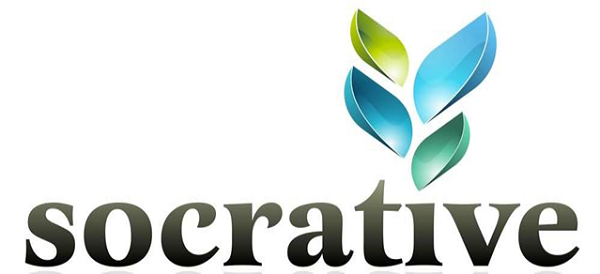
At the end of the training session, learners are encouraged to use Socrative to share questions about the topic discussed and collect questions, which the tutor again addresses in the next session.
Using this Virtual Learning Environment (VLE), the learners manage to collect all the queries and points on which they need further clarification. This helps the faculty members to get a good idea on the positives the students got from the training session.
Reflection and Research
Every learning tool should have a self-reflecting feature which helps it in gaining further understanding of its users so that it can introduce features and services to further facilitate education online.
Through reflection, the learners can focus on what they have gained through the implementation of the M-learning software as a part of their pedagogy and through that experience, they can suggest changes and modifications, which will later reflect as improvements in exploring new dimensions and offering fresh insights into e-learning.
The following apps have been very successful in their ability of reflection and exploration of ideas and thoughts of its users −

Evernote − one of the most popular webbased tools, its functionalities are very similar to word processors, but it also has the ability to insert audio notes, images, and other reminder notes into the documents.
WordPress − It is a popular open source blogging platform, just like Google Blogger. It provides many pre-customized templates to the users to choose from to give their blog their distinctive look. WordPress also supports embedding of templates, social media links and multimedia elements.
Google Docs − As a massively used online document creating device, Google Docs provides the user an online platform to create documents, excel sheet files, and presentations online, without even installing the MS Office software. This provides the user the opportunity to develop the presentations in real time.
Research
Research is one of the most important parts of getting an adequate learning experience, especially in cases where a student is preparing for an academic paper. Research broadly can be classified into three areas of functions which are given below −
- Collecting and sorting information
- Brainstorming and filtering
- Sharing sources and references

Technology has further facilitated these steps by ushering the age of digital data, which can give learners access to a virtually unlimited supply of reference materials, eBooks, research journals, in addition to a platform for getting assistance from online tutors. Not only this, the services are also available anytime the learner wants to access them.
Cost vs Benefit Ratio
While calculating the cost-benefit ratio of mobile training, it is important that we keep one thing in mind that different people use different devices with different features and functionalities. Depending on these features and functionalities, there will be a lot of fluctuations in price of devices.
Also, it is difficult to record how much resources are being used by learners, how long are each one of them staying connected online, what is their individual data consumption and connectivity levels. So, if we are calculating costs from a holistic perspective, it will far exceed the cost of just the mobile phone.
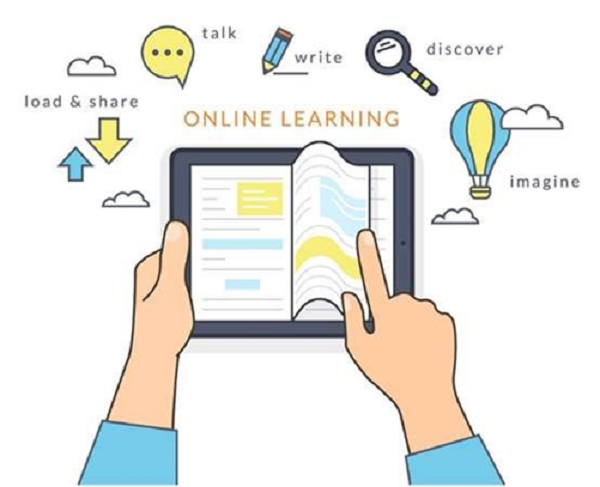
However, if we compare the costs with the existing costs of physical libraries, recurring expenses of tutoring and evaluations, we will find that mobile learning offers a one-time solution to all these issues. Once the basic framework is established, it is only a matter of adapting to new changes and adding new facilities.
In the long run, mobile learning is going to definitely become much more cost-effective as compared to traditional methods of learning. This is the reason many institutions are gradually warming up to the BYOD concept. The other reason behind adopting BYOD policy is that mobile phones providing a nag-free mobile learning experience are costlier compared to laptops, yet get obsolete twice as fast.
Everything said and done, mobile learning is a phenomenon that's going to stay. Earlier students used to feel thrilled at the prospect of owning a desktop. However, it's immobility caused people to discard it fast and get a laptop, which provided them the option to carry their work where they went. However, students or even children nowadays are more likely to use mobile devices as opposed to carrying a laptop because they find laptops too heavy and clumsy, as compared to a smartphone, which is basically clutter-free in comparison. All you need is the device and a charger. That's it. No cables, no wires, no additional baggage.

Just as schools, colleges and universities don't supply the writing accessories like pen and notebooks, yet expect you to use them and carry them with you at all times within the campus, the times are not far away when they will expect you to be carrying your own smartphone device to the college so that you can use them in your journey of mobile learning in online communities.
Communication through Mobile Learning
Communication is the backbone of education. When it comes to M-learning, communication can take many forms, such as −
- Calling
- SMS
- Video-conferencing
- Chatting, etc.
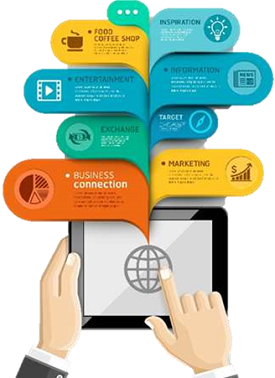
Depending on the number of people engaged in the conversation, the mode of communication could be one-to-one, one-tomany and many-to-one. There have been many developments in task-related communications using online applications, some of which are scheduling and collaborative project work.
Online collaboration has now overtaken traditional methods of writing as the largest medium of content creation. Communication between a learner and trainer involves a multi-layered information sharing model, complete with deadlines, progress bars, and adequate fields for feedback and provisions for correction and improvement.
This need to share a one-one relationship with the trainer has led to many companies creating tools that enable a student to get that exclusive feeling of tutoring. Using these tools, learners can have an exclusive chatting session with their tutor, get feedback and ask questions, unlike a classroom environment where the students dont ask questions half the time because they are scared lest they be made fun of in the class.
Sharing Resources in Mobile Learning

The introduction of cloud computing has seen a lot of positive changes introduced in online education. What originally only meant data sharing, also became useful as creating data storage libraries for all to share.
This became very useful for teachers, who now do not need to share documents needed for tests individually. All they had to do was upload the files in cloud, so that all the people connected can access it from there. Data is not stored locally any more.
Rather it is being increasingly stored in the cloud. Although, there are some legitimate concerns about sharing sensitive data in cloud, where many people have access to it and you cannot determine which other people they can share the information with.
Presentation
The use of digital media for presentation became a successful venture with the advent of PowerPoint slideshow presentations. This revolutionized presentation themes and left a legacy which continues to this day.
In fact, in todays world, learning materials need not be presented locally any more. They can all be presented for online access. Real-time information can also be shared in webinars.
Presentation no longer has to be a one-way activity as various tools provide the ability for collaborative work or real time feedback from teachers. The material of course can be supplemented with interactive tools permitting polling or live answering of questions.
Content Creation
Earlier, the skills and tools to create sophisticated audio and video content were only the available with trained professionals. However, with the increasing influence of online learning on our lives, people now have devices that can record and share songs, make videos and broadcast them online within moments.

Software Tools that can auto-correct rookie errors in video-shooting and music recording are now available for free usage online. This is not to say that the quality of video or audio files are now industrial standards, but they are gradually improving and in time, will replace professional services.
M-Learning Platforms
Mobile platforms aim to provide a range of choices to the customer to make changes in the product as per his requirement, aesthetic sense and ease of access. Keeping this in mind, majority of mobile platforms come with built-in accessibility features which make it easy for the user to access information as per his requirement and convenience.
The multiple ways that mobiles can be personalized involves changing the screen size, the font color, font itself, along with magnifying text and reading background. The vast opportunities of personalization make the learning experience inclusive and customized.
Visual Cues
To make an M-learning software appeal universally, the makers must keep in consideration that there are many learners who might be hearing impaired. Such people wont be able to get an audio-based notification that rings in the background of an application they are currently using.
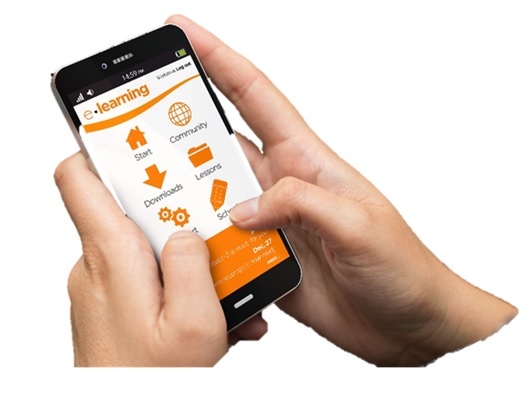
In such cases, visual cues are the best way to give a notification to the learner that some important message has been delivered or some area needs to be looked into. It also is a useful feature for people who dont want constant buzzes or audio notifications to distract them from their work.
Customized Reading Tools
Nowadays, all M-learning tools have started implementing reading features when a person struggles with text. By using The Reading Feature, the person can listen to the in-built narrator read out lines after lines from the text.
People with dyslexia or literacy concerns with, say English, will be able to just listen to the lines and get the meaning all fine. Speech to text readers have been hailed as a breakthrough for visually impaired people, who earlier had to always rely on a physical narrator to read them some text.

In addition to these, screen readers and voice command readers have helped people navigate their cars without having to look up locations in a physical map. Developers are working on a speech recognition tool which will provide excellent writing support to writers.
Using this software, writers will be able to narrate sentences into the system and the sentences will be recognized by the editor and automatic transcripts of spoken sentences will be made. Not only that, they can also edit the transcripts through verbal commands.
This will save them a lot of time as all they have to do now is speak, as compared to what they used to do earlier, i.e. speak into a recording device, transcript it, and then edit it.
Expectations of Mobile Learners
Mobile learnings biggest advantage is its seamless interaction with different forms of media at the same time. The amount of personalization it allows learners is second to none. This results in a personalized social learning curve, where each individual learns at his own comfortable pace.
The use of different methodologies and pedagogies enables users to get a strong grasp on the subject. As the students are working on a BYOD Principle (Bring Your Own Device), it allows a high degree of familiarity with the tool which reduces frustrations over not being able to access the device.

However, everything depends on creating a well-planned and well organized layout for those students, who have used technology predominantly for social interactions till now. Asking them to make a shift towards using technology for learning requires a clear communication and setting of expectations with them. To meet these requirements, the following recommendations will come in handy −
- Technologies that learners are going to use need to be well explained for their benefits.
- Learning resources and course completion strategy must be shared by the virtual learning environment.
- The tools must share a preview of the advantages to learners through the innovative learning experience.
- Deliver a consistent platform for learners when they use technology for education.
- Deliver a level playing field to all learners, despite their learning speed or skills sets.
- Impress the future of technology-based education on the first time learners.
These recommendations keep in mind the fact that mobile learning is essentially a platform where shared learning has already shaped the intelligence levels of different people in the classroom.
Students sharing information online has changed the way education was perceived from earlier times. Now, there is lesser gap between proficient students and hard-working students who want to be proficient.
Mobile Learning Essentials - Cultural Factors
An organizational culture is defined as a collection of thoughts, values and beliefs shared within the organization. With its large, encompassing and far reaching effects, mobile learning can introduce many changes in the organization cultures of an organization.
On the plus side, it opens up opportunities for people to explore and bring in new approaches to departments who were working in silos. On the flip side, it could bring about a huge restructuring of the organizations culture to include the many points of view that the different remotely working, contract based service providers are catering.
In todays world, every company has to constantly re-invent its working methodology to adapt to the fast changing environment. Companies that werent very responsive earlier have been made answerable due to the word of mouth information sharing that is made possible due the use of social media. In todays time, a company needs to be comfortable with the idea that some of the best thoughts could come from not their managers, but their interns by their questioning the organizations working methodologies after comparing it with what other companies are doing. Mobile learning will enable them to do this.

This helps bridge the gap between the so-called Brains of the Organization and a genuine aspirant, who keeps himself abreast with all the modern changes happening in the real world. The next big idea could come from any managerial or departmental level now, thanks to mobile learning.
It helps in keeping the management on its toes in an effort to constantly re-evaluate their roles and their contribution to the organization. These changes happen because mobile learning provides a boundary-less, unrestricted and unregulated access to information. Now, no one can claim monopoly on talent and knowledge.
Keeping such a wide perspective in mind, the most important questions that can be asked of mobile learning as a substitute for traditional training in the classroom are −
- Does mobile learning reduce the interaction time between employees or students?
- Is this substitution in pedagogy bringing in a positive transformation?
- Has the mobile learning approach been accepted positively?
- Is everyone getting equally benefitted from mobile learning? Who is getting marginalized?
- What will be the ration of positive changes vs. drawbacks of mobile learning in the working environment?
Mobile learning can be one of the most effective methods of breaking down the lines of distinction between formal and informal learning. Today, teachers happily don the roles of facilitators and refer students to any one the many instructional videos available online.
Let us now understand the difference between Video, Audio and Text tutorials.
Video Tutorials vs Audio Tutorials vs Text Tutorials
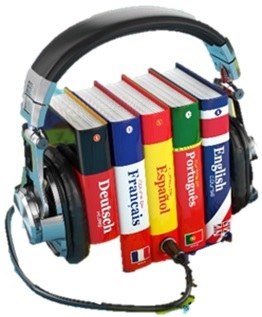
Where most learners prefer video tutorials over text tutorials because of the illustration-backed understanding that the former provides, many people have started gravitating towards audio tutorials off late, because they feel disoriented when referring to video content.
They report a high level of distraction and prefer audio learning. Audio enabled eBooks have become a great success in recent times. In the same breath, it has been observed that people prefer interactive online training where they can ask questions any time, much more than going simply going through stock videos.
The interesting point here is that this person sitting miles away would be describing a complex concept in simple language, without having a degree on the subject. In this case, it was his explaining powers that held more importance compared to his lack of an academic qualifications.
More people can be engaged through this concept which makes the entire effort more collaborative and productive. Not only this, cultural boundaries are broken as different people get to know about one anothers culture and interact with one another.
This not only builds a multi-cultural team, but also enhances a mutual tolerance towards different cultures. Cultural sensitivity could be one of mobile learnings biggest assets. Instead of people working in culturally profiled sub-groups, the entire organization can now work as a huge team.
Mobile Learning Essentials - Frameworks
Depending on the field in which Mobile Learning is to be implemented, users could choose between many available operational frameworks that have proven useful in boosting learning in many educational institutes.
These frameworks are −
Behaviorist − This framework promotes learning through changes in individual observation skills.
Constructivist − This framework encourages the construction of new ideas and methods.
Situated − Culture based education framework.
Collaborative − This framework encourages learning through social interaction.
Informal and lifelong − This framework supports learning outside curriculum by providing virtual environment.
Learning and teaching support − This framework coordinates learners with resources for learning.
Many online collaborations see many of these frameworks intermixed with each other during the implementation. Not all of these frameworks are collaborative in nature, although thats the backbone of mobile learning.
Some of them are more oriented towards increasing learning levels through personal observations (behaviorist framework). In these frameworks, the learner is given more inputs through his interaction with the learning software, as compared to his interaction socially.
Parks Pedagogical Framework
Parks (2011) pedagogical framework pitches distance against social activity to understand the meaning of social interaction. It makes a calculation of the amount of time two or more individuals are supposed to interact for a task to be completed successfully. This framework gives academics to plan the learning and teaching strategies for their learner base.

Kooles model for M-learning Pedagogy
Kooles framework uses Venn diagrams to explain the three aspects of M-learning, which are as follows −
- Learner (L)
- Society (S) and
- Device (D).
Depending on the overlapping of these three circles, different zones are created. Some of these are −
- Device Region
- Learner Region
- Social Region
- Device Region
- Interaction Region
- Social Region
- Mobile Region
According to Koole, Mobile learning is a combination of interactions between learners, the devices they use for M-learning, and the other people this learner interacts with. Depending on the elements, the areas of involvements are defined.
Mobile Learning Essentials - Role of Context
The reason M-learning has become such an exciting area of research is that it provides real time learning solution in concentrated snippets of information. While this in itself is a good working methodology, the contexts in which mobile technology actually becomes fruitful might not be available at all places.

Without these contexts and environment, mobile technology will not survive. Imagine a University where there are rigid classroom training hours, fixed curricula, and inflexible routines. Mobile learning wont survive a semester in this environment. Let us understand the importance of these concepts and how they play such an important role in mobile learning.
Changing Contexts
Earlier, knowledge was restricted to physical forms such as books and texts. Not only physical boundaries, knowledge was also restricted to space boundaries. Earlier if you needed to learn something new and you didnt have a book for it, you had to look for it in libraries.
With the growth of mobile phones and social networking, that barrier has fallen. Students are no longer dependent on teachers for their information as online communities are fast organizing all relevant information under different categories, which makes collecting information very quick in real time.
Understanding Context
Sometimes, contexts change within the span of a semester itself. For example, a classroom training session could change to a project work scenario, where every student has to interact with one another and get results, as opposed to the one-to-many approach of learning they were being subjected to earlier.
Assessment, Feedback and Submission
Any learning session should be tested against a fair assessment system. Assessments give a transparent image of what learners have managed to achieve through a learning pedagogy. However, the traditional system of assessments involves making students appear tests, where they fill up questions sets with answers and get marks based on their answers.
While this is still the standard in mobile learning technology, what changes is that mobile learning takes away the subjective angle from assessments. Now, students know that their scores and rankings are genuine as there would be no emotional element involved in awarding marks.
Also, there will be plenty of time saved by electronic scoring of paper, as compared to the traditional method where an evaluator had to check the answer, decide of the marks, score the answer, and total the final score.
Some of such similar advantages are −
- Instant Feedback
- Individual and Group Feedback
- Statement Banks- Minimize Effort
- Monitor Group Process & Outcomes
- Transparent Assessment
- Ease of Sharing Confidential Documents
- Easy Distribution of Information
- Faster Process of Scoring
- More Time for Practice and Feedback
Mobile learning also involves learning through quizzes, polls, DIY tasks, submission facilities and methods for students to engage their minds in studies while providing for assistance through online mutual tutors.
Facilitating Mobile Learning
Experts in the line of education predict that Mobile learning is going to bring a paradigm shift in education because of the changes in the approach, and incorporation of technology into learning. However, whenever any change of such scale is implemented, many technical and procedural changes are bound to happen. While these changes can still be adjusted to with the passage of time, the cultural changes that mobile learning brings might create some more complex scenarios in the workplace.
Identifying Barriers
One of the earliest barriers to mobile learning came from academic circles, and within the teaching community. Teachers werent too keen on losing the power or authority of being the sole educator in the classroom, whom all students were supposed to look up for knowledge. Suddenly there werent teachers teaching, but teachers answering queries.
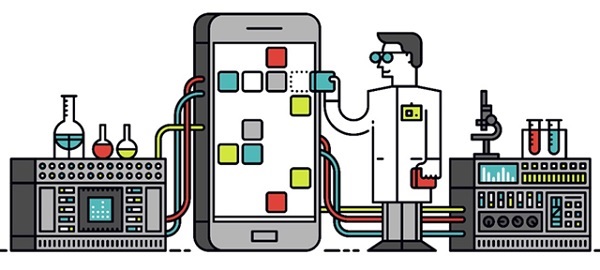
This was a marked difference from the one-to-many approach that the teachers had gotten used to in the many years of their teaching experience. This created an ideological chasm between teachers and the management. While the management was very excited to adopt the new learning methods, so that they can be perceived as a learning institution with an open door policy for education, the teachers were not thrilled at the idea of having to answer queries from different students who has referred to a different source of information.
Other barriers include ambiguity on understanding the difference between e-learning and mlearning. While e-learning involves delivering in depth training on a topic, m-learning is designed to provide nuggets of information in real time and in quick bursts of time.
More such barriers are −
- Issues in tracking results in real time and implementation
- Risk of initial disruption of students learning process
- Different standards, operating systems, and screen
- Absence of demographic boundary
Barriers to mobile learning, as with any change management initiative are heavily contextdependent and will alter in terms of intensity as hardware and software.
Finding Enablers
As with barriers to mobile learning, there are also positives and enablers to it. The most significant of these enablers is the element of familiarity. Students are already using the same tools for facilitating their learning.
These tools are very easy to adapt to and use cloud storage as a basis for data sharing. All the information is always available at the tip of the fingers and takes very less time to be accessed.
Mobile Learning Essentials - Case Study2
Educational websites like Edmondo have used social communication and collaboration to provide a seamless online teaching experience to students and teachers in schools. Edmondo allows students to share content, design quizzes and work on assignments together.

It also has provisions for teachers to provide real-time online assistance and instant feedback through its tool, Snapshot which provides many assessment tools for teachers, using which they can map the progress of individual students in their class. It has merged with publishers like Oxford University Press and Cambridge University Press to provide access to educational content on the Edmondo Platform.
Features
- Virtual whiteboard with infinite pages for collaborating and team-learning
- Timeless data storage for future references
- Real-time voice conferencing and chatting
- Image uploading, multiple color-coding
- Voice conferencing and chatting
Benefits to Teachers/Tutors
Edmondo provides opportunities to tutors to hold meeting sessions online and review performances, while providing a platform to share feedback with individuals as well as the entire group of students collectively. Data related to progress and evaluation can be also illustrated using built-in technologies.
Benefits to Students
The students also have the option to discuss their homework with their tutors, take timely advice and guidance from them, and get feedback through illustrative examples. It also has provisions for sending invitations to teachers to get into a discussion forum and guide students.
Adopting Mobile Learning
Mobile learning, like any change initiative, involves working in partnership. If its to become a successful business model, then it should have clearly defined set of principles. As discussed previously, the faculty members of a college shouldnt be opposing the new technology while the management is actively pursuing their separate agenda.

Other stakeholders might also need to have a complete understanding of the working model of mobile learning to be able to make it successful. Some of the following questions will help in finding a framework within which mobile learning should be improved −
- How much will be the initial cost investment in implementing mobile learning?
- What skills do teachers need to be comfortable with mobile learning?
- What are the areas depending on which you can measure success?
- How can fasten the process of acceptance and adoption?
- What pre-existing problems does mobile learning solve?
- What technologies does it need to be implemented?
Evaluation
Every result-oriented step needs to have an evaluation to understand the level of influence it left. For many reasons, evaluating a technology based process, which is still in an evolving state, is quite a daunting task. The complexities of evaluation in mobile learning arise from the absence of an evaluating standard. There are various contexts in which a person may want to learn different facts. Evaluating a change involving technology can be challenging for a variety of reasons. The following pointers will help in identifying a set of expectations that people will have from an evaluation system −
- The sources whom the learner uses for learning
- Learning objectives and expected outcomes
- Learning methodologies and pedagogies
- The physical layout of the learning place
- Learning process and tools used
While these questions will definitely guide the developers towards developing a better environment, it is important to lay a solid foundation from the beginning. There are certain factors that every mobile learning platform is supposed to have. Some of these key elements are −
- Robustness of the platform
- Trustworthiness
- Cost efficient and time efficient
- Ethical practices
- Within Legal Boundaries
- Specific and exact
- Technologically sound
- Consistent and reliable
When these areas are addressed, the users will get a robust framework within which they will be able to get learning on the go, as well as getting exact information that are pointed and targeted to provide answers in real time.
Example BYJU
How BYJU has provided a good Mobile learning platform to the students?
Faculty take all possible measures to provide 24*7 assistance to all their students through email, and on phone and WhatsApp. They provide a tablet that comes preloaded with videos with expandable SD card memory.
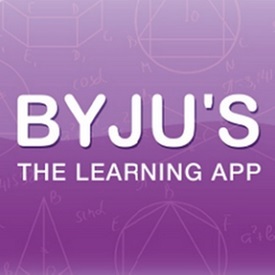
They provide discussion labs in which learners can hold extensive and detailed conversations. Information is available neatly in bullet points and for easy accessibility. In addition to all this, they have the best educators on the subject who stay online at all available times to provide speedy resolution.